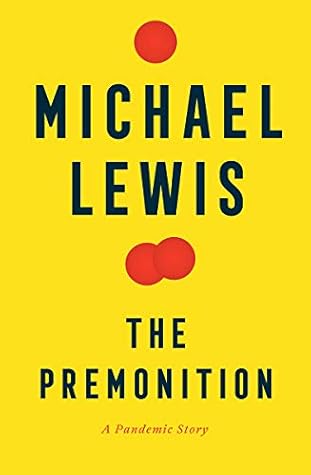More on this book
Community
Kindle Notes & Highlights
The cure meant nothing if the patient never received it. Standing between the cure and the patient, in this case, was a U.S. medical-industrial complex that lurched between lethargy and avarice.
The pattern continued right through the pandemic: the Trump administration would claim with fanfare that supplies were on their way to the states and leave it to the career civil servants whose job was to interact with state officials to reap the humiliation when those supplies failed to arrive. It would happen again with ventilators, with the drug Remdesivir, and, finally, with vaccines. Among other consequences of the White House’s strategy was that it gutted the credibility of the career federal officials.
The absence of federal leadership had triggered a wild free-for-all in the market for pandemic supplies.
One measure of poverty is how little you have. Another is how difficult you find it to take advantage of what others try to give you.
The big takeaways seemed to be what everyone was just then figuring out: the virus was disproportionately attacking poor people of color unable to work from home;
was not possible for a vaccine maker, or a society, to adapt to an evolving virus without genomic information. And yet nearly a year into the pandemic, in February 2021, the number of genomes being sequenced in the United States was trivial—less than a third of 1 percent of the virus in people who tested positive.
The United States was sequencing fewer of its genomes than any other industrialized country,
Joe had been shocked by just how slow the society was to realize what science might do for it: it was as if tanks had been invented before the Civil War and the generals couldn’t figure out their purpose.
The American institutions built to manage risk and respond to a virus had been engaged in a weird simulation of crisis response that did not involve actually trying to stop the virus. “The greatest trick the CDC ever pulled was convincing the world containment wasn’t possible,” she said. “Our dignity was lost in not even trying to contain it.”
Whatever the reason, the people who ran the state were twisting themselves into knots to preserve the illusion that all was well inside California’s Department of Public Health.
Why doesn’t the United States have the institutions it needs to save itself?
Despite the White House spin attempts, this will go down as a colossal failure of the public health system of this country. The biggest challenge in a century and we let the country down.
The gist of all three was that the CDC, under Robert Redfield, had been disgraced. It had let itself be used by the Trump administration to lead the United States in a direction opposite to the direction the United States had once led the world.
The Reagan administration must have noticed the possibility. After Foege resigned, the White House converted the position of CDC director from career civil servant to presidential appointee.
Henceforth the CDC director would not bubble up from inside the CDC, lifted by the approval of his peers, but would be plucked from the supporters of whichever politician happened to occupy the White House.
The entire United States government had been drifting that way for some time—management jobs once done by career civil servants being turned into roles performed by people appointed by the president.
One of the problems this created was management inexperience: the average tenure of the appointees fluctuated between eighteen months and two years, depending on the administration.
Another was the kind of person the job now selected for. There would be exceptions, of course, but the odds favored the pleaser. The person who did not present risks to the White House’s political operation. T...
This highlight has been truncated due to consecutive passage length restrictions.
But Sencer had also exposed the price of bravery. After Sencer—or after Foege—the CDC’s relationship to disease control had changed in ways that eliminated its need for bravery.
It had replaced the flowers on its porch with fake ones and hoped no one would notice. But people did notice, at least those who came close to the porch. Rajeev Venkayya had seen things that caused him to exclude the CDC from playing a role in the invention of pandemic planning. Joe DeRisi had seen how little interest they paid to a weapon that might transform the control of disease.
And the need to make hard decisions in public health didn’t just go away. It got pushed down in the system, onto local health officers. They had little social status and were thus highly vulnerable, but they also had little choice, if they hoped to save lives. Local health officers across the country paid with their jobs and more in ...
This highlight has been truncated due to consecutive passage length restrictions.
“Government—and the value government provides—isn’t just the whim of whoever happens to be elected at the moment,” said Richard. “That government provides continuity across administrations and should be the repository of accumulated institutional experience and wisdom.”
They decided that their hides would be saved by the countries that had bungled their pandemic response. They’d be able to point to them and say, “Look! That’s what would have happened to us!” They never imagined that other countries would use the United States to demonstrate their own counterfactual. “We are the bad example for the rest of the world,” said Carter. “That’s what is so embarrassing.”
What puzzled Carter maybe more than anything was how people who should have known better had downplayed the risk. Donald Trump was one thing; scientists were another.
The pandemic had given America’s enemies a clear view of the country’s weakness: its inability to respond to a COVID-like threat.


